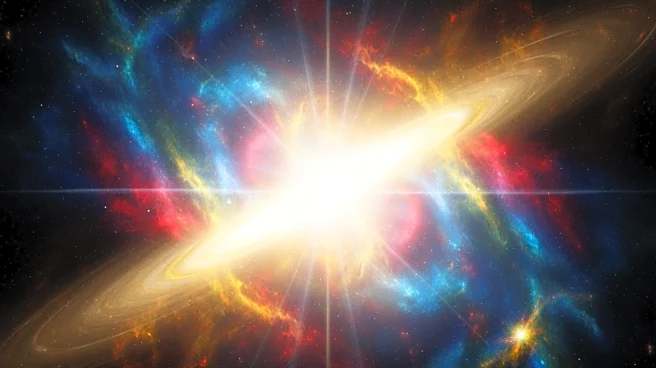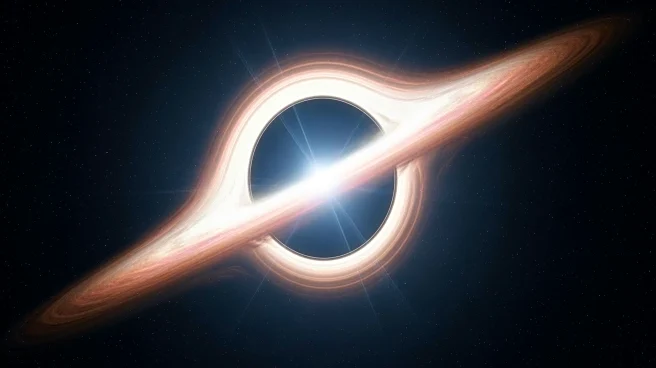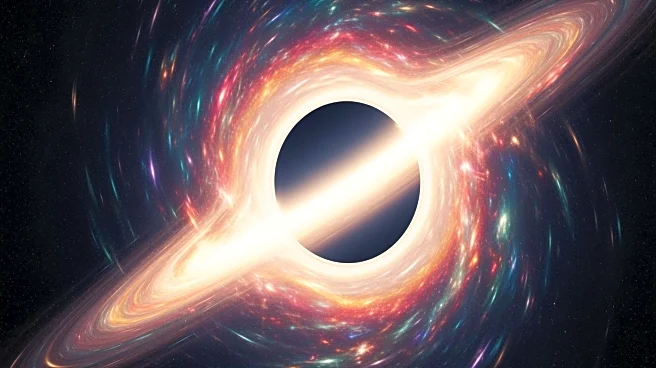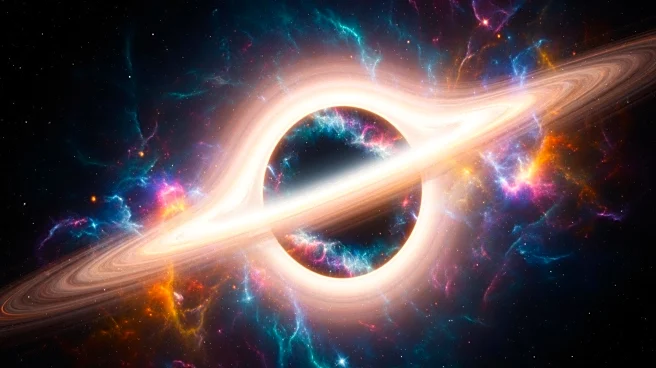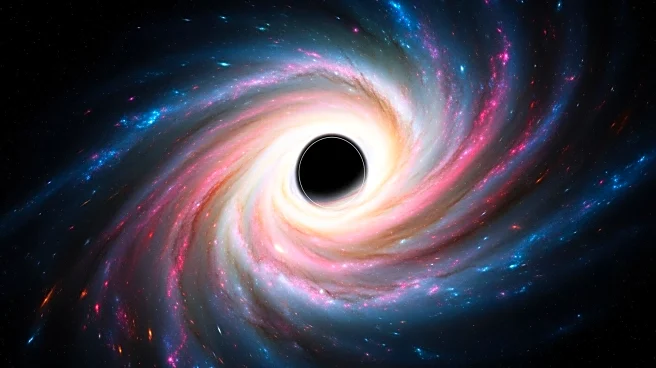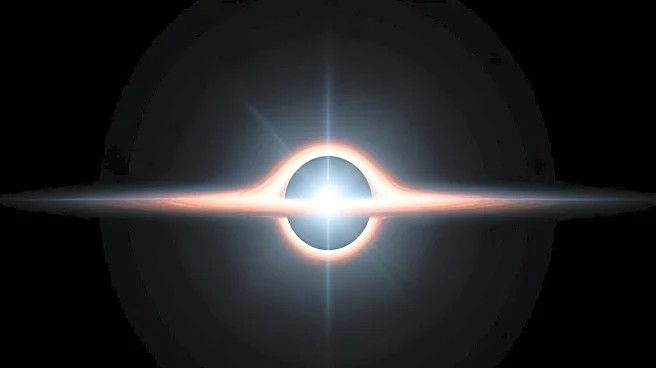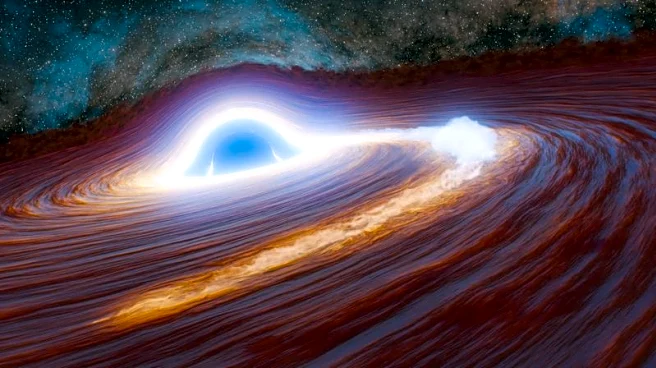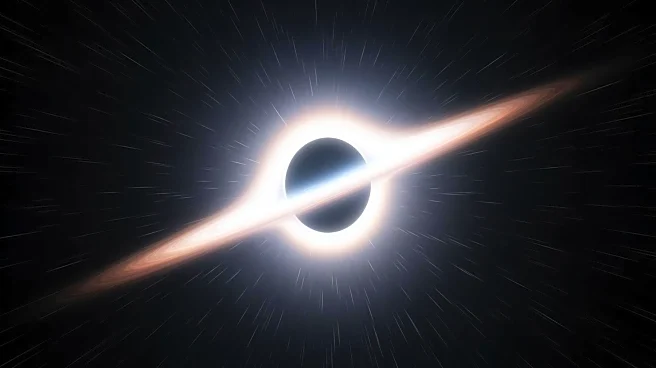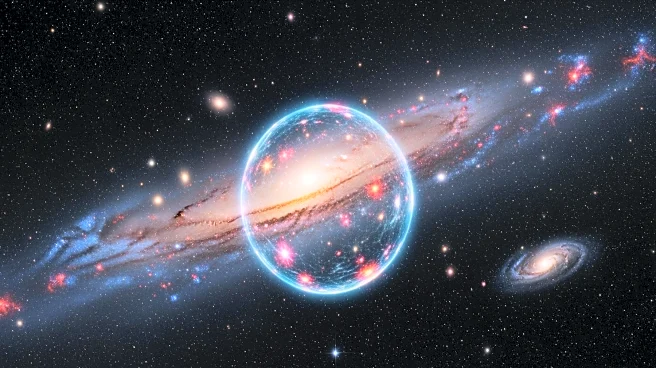What's Happening?
Scientists have observed the most energetic flare ever recorded from a supermassive black hole, emitting light equivalent to 10 trillion suns. This event was triggered when a large star, estimated to be
between 30 and 200 times the mass of the sun, ventured too close to the black hole, resulting in its destruction and transformation into a stream of gas. This gas heated up and shone intensely as it spiraled into the black hole. The supermassive black hole, located in a galaxy approximately 11 billion light years from Earth, is about 300 million times the mass of the sun. The flare was first detected in 2018 by the Palomar Observatory and took three months to reach peak brightness, becoming 30 times more luminous than any previously recorded event of its kind. The flare is ongoing but diminishing in luminosity, with the entire process expected to last about 11 years.
Why It's Important?
This observation provides scientists with a rare opportunity to study the universe's early epoch, offering insights into the formation and influence of supermassive black holes. Understanding these distant cosmic phenomena is crucial for comprehending the fundamental interactions that have shaped the cosmos. The event highlights the dynamic nature of black holes and their ability to affect their surrounding stellar environments. As almost every large galaxy, including the Milky Way, hosts a supermassive black hole at its center, these findings could have significant implications for astrophysics and our understanding of galaxy formation and evolution.
What's Next?
The ongoing observation of this flare will continue to provide valuable data for researchers. As the flare diminishes over the next decade, scientists will analyze the changes in luminosity and other characteristics to gain further insights into the behavior of supermassive black holes. This could lead to advancements in theoretical models and a deeper understanding of cosmic phenomena. Researchers may also explore the implications of these findings for the study of other distant galaxies and their central black holes.
Beyond the Headlines
The event raises questions about the formation mechanisms of supermassive black holes, which remain largely unknown. It also underscores the importance of advanced observational technologies in capturing and analyzing distant cosmic events. The study of such phenomena could lead to breakthroughs in understanding the universe's history and the role of black holes in shaping it.
